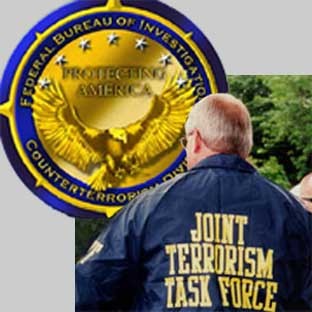PROTECTING
AMERICA AGAINST TERRORIST ATTACK
A Closer Look at the FBI's Joint Terrorism
Task Forces
12/01/04
 They are our
nation's front line on terrorism: small cells of highly trained,
locally based, passionately committed investigators, analysts, linguists,
SWAT experts, and other specialists from dozens of U.S. law enforcement
and intelligence agencies.
They are our
nation's front line on terrorism: small cells of highly trained,
locally based, passionately committed investigators, analysts, linguists,
SWAT experts, and other specialists from dozens of U.S. law enforcement
and intelligence agencies.
When it comes
to investigating terrorism, they do it all: chase down leads,
gather evidence, make arrests, provide security for special events, conduct
training, collect and share intelligence, and respond to threats and
incidents at a moment's notice.
They are the
FBI's Joint Terrorism Task Forces, or JTTFs.
Where are they
based? In 100 cities nationwide, including at least one in each
of our 56 field offices. Sixty-five
of these JTTFs were created after 9/11/01.
How many members? 3,723
nationwide—more than four times the pre-9/11 total—including
2,196 Special Agents, 838 state/local law enforcement officers, and 689
professionals from other government agencies (the Department of Homeland
Security, the CIA, and the Transportation Security Administration, to name
a few).
The first JTTF? New
York City, established way back in 1980.
The newest? Actually,
there are 16 of them: in Montgomery, Alabama; Fayetteville, Arkansas; Fresno,
California; Colorado Springs, Colorado; West Palm Beach, Florida; Bloomington,
Indiana; Covington, Kentucky; Portland, Maine; Grand Rapids, Michigan;
Helena, Montana; Erie, Pennsylvania; Providence, Rhode Island; Midland,
Lubbock, and Plano, Texas; and Everett, Washington.
Their contributions? More
than we could possibly capture here, but JTTFs have been instrumental in
breaking up cells like the "Portland Seven," the "Lackawanna
Six," and the Northern Virginia jihad. They've traced sources of terrorist
funding, responded to anthrax threats, halted the use of fake IDs, and
quickly arrested suspicious characters with all kinds of deadly weapons
and explosives. Chances are, if you hear about a counterterrorism investigation,
JTTFs are playing an active and often decisive role.
How do these
JTTFs coordinate their efforts? Largely through the interagency National
Joint Terrorism Task Force, working out of FBI Headquarters, which
makes sure that information and intelligence flows freely among the local
JTTFs.
And here's the
final—and most important—thing you should know about these
JTTFs: They are working 24/7/365 to protect you, your families,
and your communities from terrorist attack.
Link: FBI
War on Terrorism


